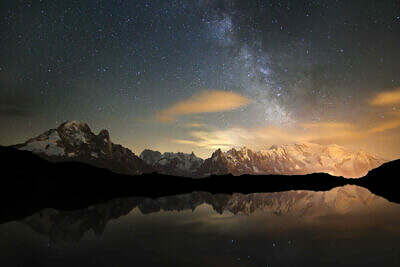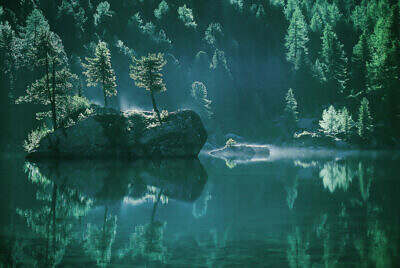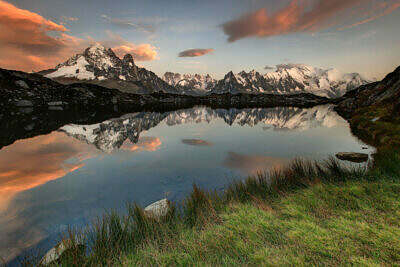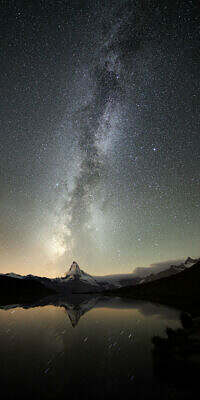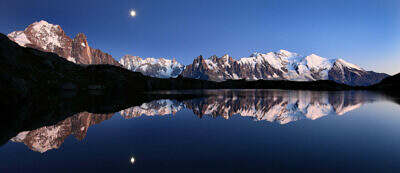The panorama of the Aletsch Glacier and the Fiescher Glacier in the Swiss Alps belongs to the most spectacular mountain landscapes in Europe. The promising thunderstorm conditions in August 2015 were ideally suited to photograph this panorama from the summit of the Eggishorn (2,869 m, 9,413 feet).
On the far right side of the image, the 4,274 m (14,022 feet) high Finsteraarhorn is illuminated by the sun in the pale yellow thunderstorm light. The 14.8 km (9.2 miles) long Fiescher Glacier has its origin in this mountain range.
The feeling of experiencing this stormy atmosphere on the summit of the Eggishorn high above the Aletsch Glacier was intoxicating. The looming light of the scenery and the incisive experience of almost being hit by lightning made the adventure behind this shot unique and unforgettable.


